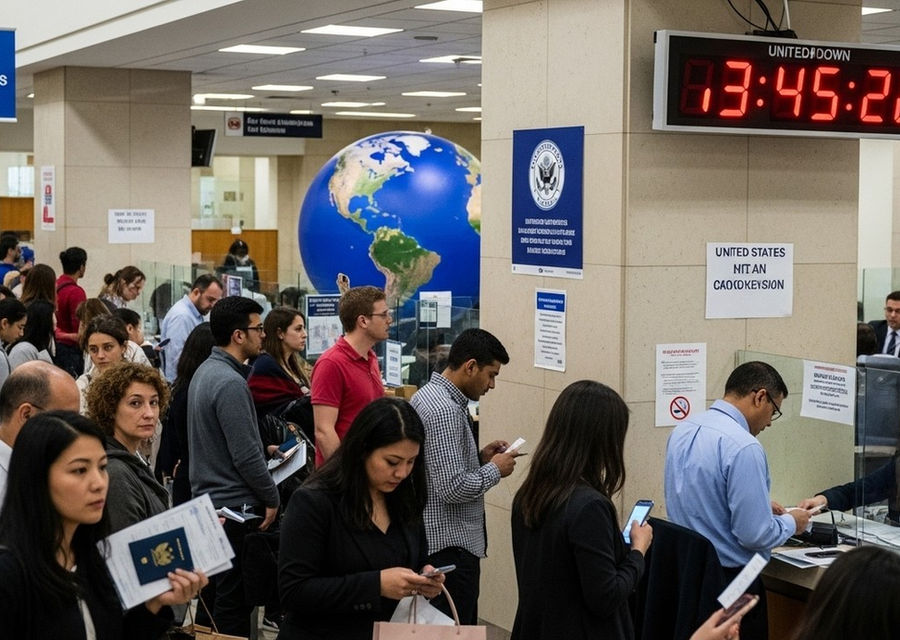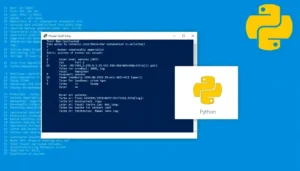US visa interview wait times: How the Home-Country Rule Reshapes Travel Plans
- THE MAG POST

- Sep 10
- 6 min read

US visa interview wait times have become the latest hurdle for travelers planning urgent trips, as a new policy shifts where applications may be filed. The rule emphasizes interviewing in the applicant’s home country, a measure intended to streamline processing though potentially extending overall timelines for many applicants.
Under the new framework, 17 countries retain alternative locations, but from the user's vantage point, the path to approval now demands more deliberate logistics and additional fees. The change also hinges on residency verification, which can complicate cross-border travel arrangements and elevate the stakes for families seeking timely entry.
Policy Shift Rewrites the Route to a U.S. Visa
A sweeping policy change redirects nonimmigrant visa interviews back to a home-country venue, reshaping the practical path to U.S. travel. The move aims to curb cross-border backlogs while placing greater emphasis on residency ties and local processing norms, a shift that will reverberate through planning and decision-making for applicants.
The new framework introduces a clear expectation: interviews should occur in the applicant’s home country, with exceptions limited to designated locations. This realignment reflects a broader tension between streamlining administrative workflows and the real-world frictions travelers face when long waits collide with urgent travel needs.
Home-Country Interviews as the Default
The default requirement to stage interviews in the applicant’s own country creates a more predictable regulatory environment for consulates and embassies. For many travelers, this means aligning trip timelines with local processing calendars, rather than navigating multi-country itineraries or informal posturing across borders to access a shorter queue.
Yet the shift also concentrates demand in domestic venues, potentially overloading capacity in high-volume countries while leaving diaspora communities scrambling to locate nearby alternatives. In practice, applicants must suddenly balance visa urgency against the realities of home-country appointment calendars and the distance to the nearest capable facility.
Costs and Logistics of Filing Abroad
Where interviews occur outside the home country, applicants should anticipate higher upfront costs and longer wait times. The policy explicitly states that interview fees paid in foreign locations will not be refunded, turning what might have been a temporary convenience into a non-trivial sunk expense with uncertain return on investment.
Logistically, filing abroad demands carefully coordinated travel, document translation where required, and an awareness of local entry/exit requirements. For frequent travelers or students, these added steps can accumulate into a substantial planning overhead, demanding earlier submission and more robust contingency planning than before.
Who Must Interview at Home and Where
This section surveys who is affected by the home-country interview rule and where exceptions exist. Recognizing that the policy targets nonimmigrant visas broadly, readers should understand both the baseline requirement and the practical nuances that accompany regional arrangements.
In practice, the State Department has carved out alternative locations for residents of 17 countries without routine visa services. The nuance matters: some applicants may still access nearby hubs in neighboring jurisdictions, but the default remains home-country interviews for most travelers, with the caveat that exceptions can alter scheduling reality.
Which Applicants Are Affected
The rule applies across categories such as tourism, business, study, and temporary work, effectively touching a broad swath of travelers seeking short-term U.S. entry. The breadth of impact means planning must account for potential multi-month delays, particularly for students and temporary workers who rely on precise start dates.
Even for those with previously straightforward timelines, the requirement raises questions about alternative appointment options, lead times for documentation, and potential disruptions caused by capacity constraints at home-country consulates. The practical upshot is a renewed emphasis on early preparation and realistic travel scheduling.
Notable Exceptions and Examples
Practically, 17 countries qualify for designated alternative locations where routine services exist, offering a limited safety valve for affected applicants. For instance, residents of certain states may be directed to regional hubs, reducing the need for long-haul travel yet still introducing additional steps and fees in the process.
Case studies from specific groups illustrate the real-world impact: Haitians may be directed to a Caribbean hub, while Syrians might need to apply in Amman. These illustrations underscore how geopolitical and logistical factors intersect with immigration policy to shape individual travel timelines and costs.
Costs, Refunds, and Practical Tradeoffs
The policy introduces a new calculus for applicants: weigh the potential savings of a shorter queue against the financial and logistical costs of filing abroad. This section breaks down the practical tradeoffs and what they imply for planning a U.S. visa strategy.
From a fiscal perspective, the non-refundable nature of foreign-location interview fees reframes what counts as a viable option. Applicants must budget for travel, lodging, and accompanying documentation, even when the home-country queue is lengthy. The decision often hinges on risk tolerance and a solid back-up plan.
Non-Refundable Interview Fees and Added Expenses
Non-refundable foreign-location interview fees elevate the stakes for applicants who miscalculate timelines or encounter appointment bottlenecks. This financial exposure encourages more conservative planning, with applicants prioritizing early submissions and flexible travel arrangements to accommodate possible delays.
Beyond the raw costs, ancillary expenses—translation, notarization, and transportation—creep into the total cost of a visa application. These added expenditures are especially burdensome for students, families, and first-time travelers who must coordinate multiple services under tight schedules.
Timing, Travel Risks, and Planning
Longer waits in foreign locations can collide with critical milestones such as academic terms, internships, or job start dates. The timing risk compounds the stress of visa procurement, prompting travelers to seek contingency options, including alternative education or employment start dates that align with anticipated visa outcomes.
Ultimately, the policy shifts emphasize proactive planning, robust documentation, and a willingness to adjust travel plans in response to evolving interview calendars. Travelers who begin processes early and maintain flexible schedules will fare best in this new environment.
Global Reactions and Travelers' Adaptations
Stakeholders across continents are observing how these changes reshape travel and migration patterns. The policy’s ripple effects extend beyond individual applicants to education institutions, employers, and visa-service networks, prompting discussions about efficiency, equity, and the balance between security and accessibility.
As applicants recalibrate, the conversation turns to the capacity of consular networks to absorb demand, the reliability of alternative locations, and the potential for policy revisions. The evolving landscape invites feedback, data-driven assessments, and the possibility of iterative improvements to reduce unintended burdens.
Shifts in Travel Behavior
Travel planning now increasingly foregrounds visa timelines alongside flight schedules and term dates. Families and students may adjust departure windows, adjust accommodation, and tolerate longer lead times to secure a visa appointment—especially where home-country appointment slots remain tight or unpredictable.
Some applicants may pivot to longer, more deliberate itineraries that align with less congested periods or nearby consular hubs. This strategic shift, while adding complexity, can yield more predictable processing and reduce last-minute disruptions caused by unexpected wait times.
Impact on Consular Services
Consulates confront intensified demand and must optimize queue management, appointment allocation, and document verification procedures. The added complexity may drive investments in digital intake, appointment forecasting, and regional collaboration to distribute workload and alleviate bottlenecks in peak periods.
Longer-term implications include potential reforms in scheduling transparency, clearer guidance for applicants, and improved coordination with immigration authorities. If successful, these measures could smooth the path for travelers while preserving the integrity of the screening process.
What Comes Next: Enforcement, Compliance, and Possible Revisions
The policy framework introduces enforcement mechanisms designed to ensure applicants submit interviews in their home country. This section explores how compliance will be monitored, what penalties may apply for non-compliance, and how future changes might be shaped by ongoing feedback.
In parallel, proponents anticipate avenues for revisiting the policy based on operational data, user experience, and geopolitical developments. Stakeholders anticipate potential adjustments to designated locations, processing timelines, and fee structures as the system learns from early implementation challenges.
Enforcement Mechanisms and Compliance
Enforcement will likely hinge on a combination of documentation checks, cross-border data sharing, and routine audits of appointment origins. Non-compliance could result in appointment denial or delays, reinforcing the importance of accurate home-country alignment in the application process.
Applicants should be prepared to substantiate residency and demonstrate ongoing ties to the home country. Robust record-keeping and timely responses to requests for additional information will be critical to avoiding costly delays.
Paths for Appeal or Change
The policy landscape remains dynamic, with channels for feedback from applicants and organizations that support travelers. The State Department may publish clarifications, extend exemptions, or adjust wait-time projections in response to practical experience and evolving security considerations.
For stakeholders, staying informed through official updates, consular notices, and reputable reporting will help navigate changes gracefully. Proactive engagement with migration experts and trusted institutions can provide a hedge against uncertainty during transition periods.
Key Takeaways
US visa interview wait times are being reshaped by a home-country interview rule that concentrates processing locally while introducing new costs and logistical hurdles. Travelers should begin early planning, anticipate longer waits, and factor potential regional exceptions into timelines and budgets. Strategic preparation remains essential in this evolving landscape.
In navigating these changes, applicants benefit from clarity, flexibility, and robust documentation. By aligning travel, study, and work plans with realistic visa calendars, travelers can mitigate disruption and maintain momentum toward their U.S. objectives.
Aspect | Key Points |
Policy Trigger | Shifts interviews to home-country locations; 17 countries receive exceptions |
Fees | Foreign-location interview fees are non-refundable |
Wait Times | Anticipated longer waits, potentially over a year in some cases |
Examples | Haitians may need to apply in Nassau; Syrians in Amman |
Impact | Increases planning complexity but aims to streamline domestic processing |






















































Comments